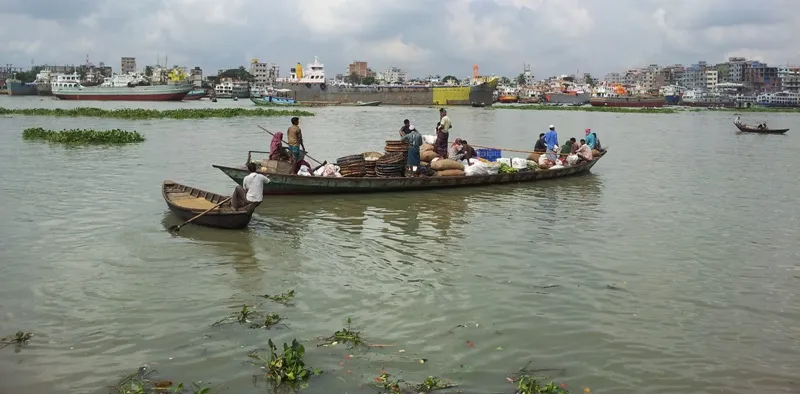The World Energy Assessment overview (2004) reveals energy security as “a term that applies to the availability of energy at all times in various forms, in sufficient quantities, and at affordable prices, without unacceptable or irreversible impact on the environment”. These conditions must prevail over the long term if energy is to contribute to sustainable development. It is not only about securing access to primary energy but also more importantly, securing the reliable final energy supplies that depend on a number of factors like: market reforms, alleviation of transportation hazards, protection of power plants, power grids and energy conservation. These concerns are often related to domestic policies with implications for international politics. The question of energy security has slowly but surely occupied the centre-stage of the national security discourse at the turn of the 21st century almost in all the countries of the world and South Asian states are no exception to it.
South Asia, home to more than 1.6 billion people, has emerged as the fastest growing region with the highest growth rates in the consumption of commercial energy in the recent times. Its Gross Domestic Product (GDP) growth has averaged at 6% for the past 20 years, and it is projected to reach about 7.4% in 2016, thus taking a place as the second fastest growing region in the world (World Bank 2014). The region is experiencing a rapid pace of industrialisation. However, some countries in the region are bracketed among the low per capita incomes in the world. Not only that, this most populated region of the world has encountered the low per capita electricity consumption as well. According to World Development Indicators database published by World bank (2014) total energy consumed by the South Asian states has been accounted as 886.3 million tons of oil equivalent (mtoe) (excluding Bhutan and Maldives).Many South Asian countries depend on a single source to provide more than 50% of total electricity generation including Bangladesh (natural gas-91.5%), India (coal-67.9%), Nepal (hydropower-99.9%), and Sri Lanka (oil-50.2%) and such dependence is not sustainable in its nature (SDPI Working paper 151: 2015). Like in many other developing countries, biomass in the form of fuel-wood, agricultural waste and animal waste remains one of the primary fuels for domestic energy consumption for a majority of the poor people, particularly in the rural areas. It is important to note that in many countries less than 5% of energy consumed came from renewable sources despite efforts to increase its share. The gap in total energy use and production in the region is calculated as 239.9 mtoe (SDPI Working paper 151: 2015). The demand for electricity is steadily rising with continued economic development in the region. However, most member states have not been able to augment the electricity supply to keep pace with the increasing demand. The net deficit situation is unlikely to change especially with regard to oil because most of the people in South Asia are likely to demand greater access to motorised transportation. Growth in demand for liquid petroleum fuels will be driven by transportation. The demand for gas will increase in near future as the region consumes more gas than it produces. In a nutshell, overall energy demand of the region outstrips supply by a huge margin.
The region has high levels of energy import dependence, particularly for crude oil, and is vulnerable to volatility in global crude prices. All economies have highly regulated domestic energy markets and have limited ability to alter their energy consumption patterns significantly. Against this backdrop, as domestic reforms are simply not adequate to address the region’s energy crisis, energy sharing and cooperation could be a key factor to improve the regional supply-demand scenario and enhance energy security for individual countries of the region as significant untapped energy resources exist within the region.
It is indeed true that initiatives for regional energy cooperation are not new in the region. Examples of signing up of SAARC Inter-Governmental Framework Agreement (IFA) for energy co-operation, establishment of the SAARC Energy Centre may be cited here. More recently, all South Asian countries agreed on the establishment of a common regional energy grid during the 18th SAARC Summit in November 2014. Cross-border electricity trade has been taking place between India-Bhutan (1400 MW imported by India from Tala (1020 MW), Kiruchhu (60 MW), Chukha (336 MW) and it is expected that India will purchase 118 MW from Nikachhu hydro- electric project shortly), India-Bangladesh (500 MW imported from India by Bangladesh and it is expected to increase up to 1000 MW) and India-Nepal (150 MW imported from India by Nepal). However, the amount is not very significant except India’s trade with Bhutan. More so, there is lack of cross-border infrastructure. Physical transmission interconnection is a necessary pre-condition to have cross border electricity trade in the region, without which the development of hydropower/renewable resources will be difficult to achieve.
The potential for energy trade with Central Asian economies has also been an area of discussion to improve energy security in South Asia. In this endeavour, Afghanistan is seen as a transit linkage. Pakistan could explore for more gas and could be the transit for Iranian or Turkmenistan and other sources of gas. Nepal & Bhutan can export hydropower. Similarly, the massive wind power potential in Afghanistan and solar power potential in India can help the South Asian region go a long way in fulfilling its energy needs. There is another segment where the region has great opportunities for inter-regional trade-the area of refined petroleum products. All countries in the region import petroleum products except India. Therefore, India can play a pivotal role in this field.
A final issue to be examined in the context is that of climate change-the results of the build-up of greenhouse gases (GHGs) in the atmosphere. In this context, one set of efforts would be to mitigate climate change by reducing GHG emissions through improvements in energy efficiency and promotion of renewable energy. Raising energy efficiency, reducing the use of petroleum based fuels requires a wide range of efforts-from pricing policies to research initiatives. However, in order to achieve any cooperative framework, it is essential to have good understanding among the states within the region. Political and religious tensions sometimes hinder commercial energy cooperation. It is important to understand that there are certain problems faced by members of the contemporary societies, which cannot be effectively dealt with by the nation-state system alone. There may be a requirement of some trans-national initiatives, along with the state system, which can try to solve the present day problem of human societies.
This commentary originally appeared in The SARCist.
The views expressed above belong to the author(s). ORF research and analyses now available on Telegram! Click here to access our curated content — blogs, longforms and interviews.




 PREV
PREV


